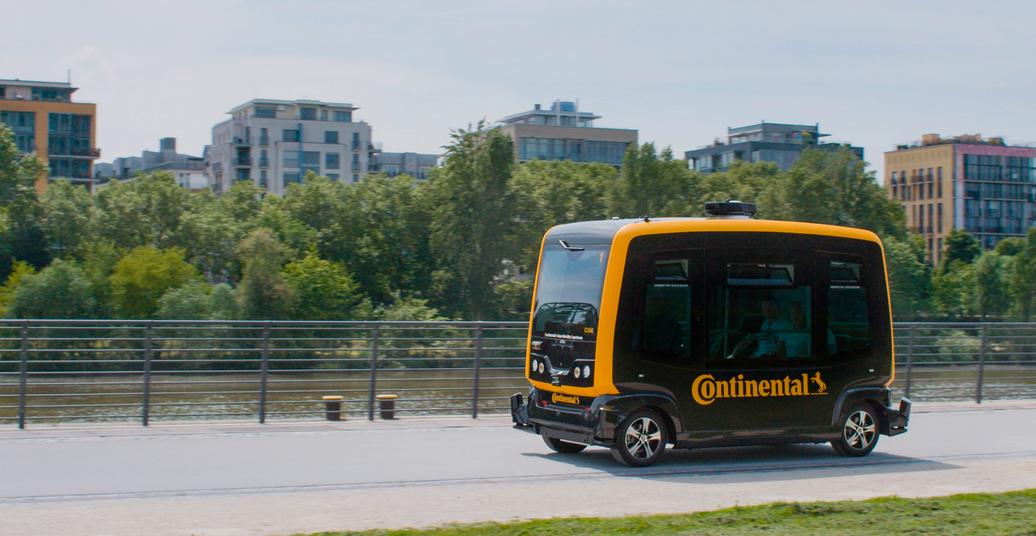
Continental launches series production of technologies for robo-taxis
Continental’s technology for driverless vehicles will be in production for the first time in French company EasyMile’s EZ10 autonomous shuttle. Continental has held a stake in this driverless vehicle manufacturer since 2017.
Driverless robo-taxis will become an important part of mobility in urban centers, helping to reduce traffic congestion and increase efficiency, says the company.
Driverless transport systems of this kind are still rare. Small autonomous shuttle buses with room for several passengers – which also qualify as robo-taxis – have driven on short, straightforward public routes during pilot projects and in designated areas at airports, hospitals, universities, and exhibition grounds.
“The technological building blocks that enable robo-taxis to operate are available in principle and have been tried and tested in practice. However, we now have to intelligently, safely, and efficiently put them together to form an overall picture,” said Andree Hohm, Director of Driverless Mobility at Continental.
The central development platform for this work is the CUbE, a small driverless shuttle based on the EZ10 platform.
The aim is not to develop the CUbE into a production vehicle, but to get a range of Continental technologies, such as brake systems and surroundings sensors market-ready so that they can be used in the series production of robo-taxis.
Andree Hohm said: “Customers developing driverless mobility systems should be able to draw from a wide array of high-performance products and solutions with Continental. We are setting the course for that. At the same time, our global activities are addressing local particularities.”
For a robo-taxi to drive autonomously, it must first detect its surroundings reliably, accurately, and completely. It does this using vehicle surroundings sensors such as cameras, radar, and lasers.
With the aid of the CUbE, Continental has developed a production-ready radar system especially for driverless vehicles. The vehicle can generate a 360-degree image of its environment by combining the data from different sensor technologies.
This, in turn, ensures redundancy and a higher level of accuracy not previously achieved, because radar systems function independent of visibility conditions and can even see through objects such as parked cars and detect the street corner behind them.
Continental’s radar sensor, which will be used in the EZ10 autonomous shuttle from EasyMile later this year, detects the vehicle’s environment within a radius of up to 200 metres. The vehicle is equipped with seven radar sensors, as well as laser sensors and cameras.
This allows the location to be precisely determined and, at the same time, early detection of obstacles and potentially critical situations.
A dual safeguard, at minimum, is not only a necessity for monitoring the surroundings in driverless vehicles, but also for the brake systems.
Continental’s portfolio includes suitable technologies, such as the MK C1 one-box brake system, which has been in series production since 2016 and combines ABS, ESC, and a brake booster.
For use in autonomous vehicles, the one-box brake system is combined with a Hydraulic Brake Extension that can, in conjunction with ABS, safely brake the vehicle in the highly unlikely event of primary brake failure. Full braking functionality is therefore guaranteed.
The ABS function represents an additional feature, because robo-taxis have not been equipped with a system of this type until now.
In addition, robo-taxis in the form of small buses are typically higher and have a higher center of gravity than conventional cars to allow passengers to enter and exit the vehicle comfortably in an upright position.
This is where a predictive driving dynamics system comes into play to ensure safe and stable handling in bends. This, too, is part of the range of innovative and high-performance vehicle control systems from Continental.
The development of these and other technologies for driverless vehicles is being advanced by a global network of five Continental centres of excellence in Germany, China, Japan, Singapore, and the U.S.
